
When it comes to gauging the vastness of the universe, we encounter the need to work with incredibly large numbers. While some of these numbers are well-known, there are others that may not be as familiar to you. So, let’s embark on an exploration of these numbers, their meanings, and the terms used to describe them.
Let’s begin with the most basic examples.
Astronomical unit
The term astronomical unit (abbreviated a.e.) refers to the average distance between the Earth and the Sun, which is approximately 149,600,000 kilometers.
However, when exploring the vast expanse of the universe, this unit becomes insignificantly small. As a result, it is primarily used to describe distances within the solar system. For instance, Jupiter is located approximately 5.2 astronomical units from the Sun. The Kuiper Belt begins at around 30 astronomical units. As of the end of 2018, NASA’s Voyager 1 space probe was situated 140 astronomical units away from the Sun, and it continues to move away from us at a rate of 3.5 astronomical units per year.
What is a Light-year?
The concept of a light-year is widely known and understood. It refers to the distance that light can travel in the span of one year.
In 1976, the International Astronomical Union established a set of astronomical constants to aid in the calculation of cosmic distances. According to this system, a year is defined as 365.25 days, or 31,557,600 seconds. The speed of light is precisely set at 299,792,458 meters per second.
When we talk about a light-year, we are referring to a distance of 94,600,000,000 million kilometers. In terms of astronomical units, it is equivalent to 63,241,077 a.u.
Parsec
The parsec is a unit of distance that is widely used in astronomy. It is derived from the words “parallax” and “second” and is calculated using trigonometric formulas. One parsec is equal to 46.27 trillion kilometers, which is equivalent to 3.2615638 light years or 206,264.81 astronomical units.
On this occasion, we will be handling exceedingly immense numbers. Therefore, to evade protracted sequences of whole numbers, we will employ degrees.
In all likelihood, anyone who attended school and participated in math courses is acquainted with the notion of a “square”. If you multiply the figure 10 by itself, which is denoted as ten, you will obtain 100. Additionally, you can express this as 10 to the power of 2. This numerical value is referred to as a degree, signifying that 10 has been multiplied by another 10, resulting in a total of 2. Consequently, an exceedingly minuscule number, the degree, will indicate the number of zeroes to be appended following the digit 1.
Data originating from space telescopes proposes that the observable region of the universe encompasses over 2 trillion galaxies. Assuming an average of roughly 100 billion stars per individual galaxy, the quantity of stars within the entirety of the observable cosmos is no less than 10 to the 22nd power.
What is the total number of atoms in the universe?
So, if we consider that a tiny dot like this – . contains approximately 125 million atoms, we can assume that the total number of atoms in the observable universe is incredibly vast. Scientists have been dedicating their efforts to estimate this number.
According to their calculations, the universe contains a minimum of 10 to the 78th power of atoms and a maximum of 10 to the 82nd power. It’s important to note that the additional digits indicate the number of zeros that follow the number 1.
However, it’s crucial to mention that these estimates only apply to the observed part of the universe, rather than its entirety….
Diameter meter, eccentricity meter, automation, GIS, modeling, software and electronics development, BIM
Measuring the diameter and eccentricity, automating processes, utilizing GIS, modeling, developing software and electronics, and implementing BIM

In October 2016, an article published in Science, which analyzed deep space images captured by the Hubble Space Telescope, proposed a groundbreaking theory that there may be approximately 2 trillion galaxies in the observable universe. This astonishing number of galaxies is approximately 10 times greater than the previous estimates. Christopher Conselis, an esteemed astrophysics professor hailing from the University of Nottingham in the UK, further added that the average galaxy contains around 100 million stars.

Nevertheless, telescopes are incapable of observing all the stars within the galaxy. A study conducted in 2008 on the Sloan Digital Sky Survey, which documents all detectable entities in a third of the celestial sphere, revealed that approximately 48 million stars fall short of astronomers’ expectations by around fifty percent. Consequently, numerous astronomers rely on the galaxy’s mass to estimate the number of stars it contains, although this estimation method presents its own challenges due to the need to account for dark matter and galaxy rotation.
Additional answers may be provided by missions such as Gaia, a space probe launched by the European Space Agency in 2013. Gaia’s objective is to create an accurate map of approximately 1 billion stars within the Milky Way. This mission builds upon the achievements of the previous Hipparchus mission, which successfully detected 100,000 stars and mapped 1 million stars with a lower level of precision.
According to a statement on its website, the European Space Agency (ESA) said that Gaia will monitor and analyze each of its 1 billion target stars over a five-year period. This extensive tracking will accurately determine their positions, distances, motions, and brightness changes. The data collected from these measurements will provide an unprecedented understanding of our galaxy’s structure and evolution. Missions like Gaia bring us one step closer to answering the age-old question: “How many stars are there in the Universe?”
Moving on to the “observable” universe – the portion that we can see – estimating the number of stars requires knowledge of the universe’s size. However, this task is challenging due to two factors. Firstly, the universe is expanding, which complicates calculations. Secondly, space-time can be curved, adding another layer of complexity to accurately measuring the number of stars in the observable universe.
For instance, an illustration of this would be the fact that light from the most distant objects can travel approximately 13.8 billion light years to reach us. Therefore, the radius of the observable universe would be 13.8 billion light years.
Observations of galaxies
Counting stars is more feasible when they are located within galaxies, as this is where they tend to gather. To even attempt to calculate the number of stars, one would need to estimate the number of galaxies and determine an average value.
According to some approximations, the Milky Way possesses a stellar mass of 100 billion “solar masses”, or 100 billion times the mass of our sun. Assuming an average distribution of stars in our galaxy, this would equate to approximately 100 billion stars. However, this value can fluctuate depending on the size of stars relative to our sun. Furthermore, alternative estimates propose that the Milky Way could harbor 200 billion stars or even more.
The discovery of a small spot in the Big Dipper in 1995 uncovered approximately 3,000 faint galaxies. In 2003-2004, scientists examined a smaller area in the constellation Furnace and detected 10,000 galaxies using improved instruments. However, a more thorough investigation in 2012 with even better instruments revealed around 5,500 galaxies.
Kornreich provided a rough estimate of 10 trillion galaxies in the universe. However, he stressed that this number is likely a significant underestimate, as a more detailed exploration of the universe would likely unveil an even greater number of galaxies.
If you enjoyed this article, show your support by sharing it with your friends and checking out the promotional links!

This post was published in the categories of Science and News by kornelik. Save a permanent link to this page for future reference.

LATEST UPDATES
TECHNOLOGY
Valentina June 5, 2012 at 13:34 Michael, your articles about the universe are so captivating. I have become incredibly interested in reading them. How many stars exist in the universe?
admin June 5, 2012 at 13:41 Valentina, do you remember the movie THE RED Riding Hood? There was a beautiful song by the Stargazer: “And for those who can’t sleep, I’ll share an amazing fact. I’m counting the stars, and the stars are countless! And it’s truly true.” Do you understand the point? There are numerous theories about the number of stars. However, I completely agree with Stargazer-Evstigneev. I believe that the stars are truly infinite. I don’t believe that the universe is finite. It is a philosophical law that space is infinite.
admin June 5, 2012 at 14:28 Some people initially just admire, then develop feelings, and eventually start to delve into the subject in more detail))))))).
Svetlana Vasilistova June 5, 2012 at 15:05 How fascinating, stars, galaxies. It never crossed my mind to try and count the stars, it’s simply impossible. It’s better to just observe and appreciate. Good luck to you!
admin June 5, 2012 at 16:33 And I’ve never heard of young ladies being interested in stargazing)))))))).
Iskander June 5, 2012 at 15:21 Do 10-meter lenses for telescopes actually exist? And even with this advanced technology, modern stargazers still face the daunting task of counting all the stars in the sky. It’s difficult to find a solution on a larger scale 🙂
admin June 5, 2012 at 16:45 Well, Iskander, don’t be shy. Based on how brilliantly you provide programming advice on your forum, as well as how clear and concise your texts are, I can deduce that you possess a mathematical mindset. So, should you be intimidated by some arithmetic operations in this case?)))))) At times, it appears to me that counting stars is no more challenging than counting rams or elephants during a sleepless night))))).
Irina June 5, 2012 at 17:57 So, the likelihood of encountering intelligent life has increased by 30%)))))) This is absolutely delightful! I immediately delved into Wikipedia – 46 female astronomers. Hence, there are women in our Universe! )))).
admin June 6, 2012 at 05:37 am Certainly, there exist female astronomers. You, dear ladies, have already conquered all professions that were once considered exclusive to men. You excel as great long-distance captains, and you have even ventured into space alongside men. ))))). This was just a playful remark I made yesterday, alluding to the classic image of stargazers. You know, how they were portrayed in movies and fairy tales: wearing robes adorned with shiny stars and a hat on their heads))))). In those times, women were not allowed to pursue such sciences. Perhaps there were isolated cases somewhere, but I have never come across such information. Although, it is possible that some women practiced pure astrology.
Irina June 6, 2012 at 08:09 In those days, a woman wearing a hat with stars looked more like a sorceress than a stargazer)))))
Irina Knyazeva on June 5, 2012 at 17:58 inquired about the number of stars in the Universe on vsellennaya.ru – http://t.co/bgajzPey
Love on June 5, 2012 at 19:53 mentioned that she has only counted the shooting stars so far. She also shared a memorable experience of seeing a meteor shower, which she found to be a breathtaking sight. Love admitted to forgetting to make a wish during the meteor shower. She then asked Michael for his thoughts on tomorrow’s parade of planets and whether it would have any impact on everyone’s lives.
admin June 6, 2012 at 05:56 A as you yourself this day, so it will have an impact on you)))) And so, I believe, it will be the same for all other inhabitants of the world. According to scientists, the next celestial alignment will occur a hundred years from now. I am aware that in the East, noble individuals often coordinated the birth of their heirs with significant celestial events, with the assistance of court obstetricians-gynecologists. They placed great faith in this practice. Is there any truth to it? This is a topic that can be debated in two ways. On one hand, “the East is a complex matter.” There were various superstitious beliefs and practices there. However, on the other hand, the East has always been renowned for its conquerors, sages, and scientists. Perhaps, indeed, we should anticipate the birth of another wave of geniuses. In general, it is widely believed that no geniuses have emerged in Russia since Pushkin. Therefore, following the laws of exceptions and coincidences, the birth of the next genius should have already occurred. )))))). It is possible that it will happen today or tomorrow))))
admin June 6, 2012 at 05:18 Do you have a good view of the stars at your country house? Take the time to appreciate the true beauty of the night sky while you still can. I’ve read many times that in many megacities, this is becoming an increasingly impossible desire. The glow from advertisements and city lights disrupts the natural radiance that the night sky offers us. But at the country house, what could be better: sitting on a bench in the late afternoon with a cup of tea, gazing up at the endless sky. As long as, of course, the mosquitoes don’t start biting. That would be absolutely fantastic))))))))
Irina Kolotova June 6, 2012 at 07:10 Well, I missed seeing Venus today. It was actually visible on the Sun’s surface as it rose from behind the horizon! Now I’ll have to wait until my next life to witness this phenomenon. It’s a shame, especially since the planetarium is practically right next door.
admin June 6, 2012 at 12:42 am I understand your frustration, I couldn’t appreciate this event either. “If we miss the sunrise, we will miss out on life.” (c) That sentiment resonates with me. Once, I read a science fiction tale in a magazine. It took place on a planet where it rained incessantly. The sun only made an appearance once every seven years, for a mere hour. There were Earth scientist colonists stationed there, accompanied by their children. The children were informed about the anticipated event, the sighting of the Sun. None of them had ever witnessed the Sun or could recall it. Except for one girl, Margot. She engaged in debates with her peers regarding the sun, but they dismissed her claims. Eventually, the argument culminated in the other children locking Margot in a closet. And then, they were summoned to marvel at the sun. The story described the children’s elation as they turned their happy faces towards the sun. However, after an hour, the rain resumed. The children were returned to the shelter, and only then did they remember the unfortunate one who had awaited the Sun with them but was compelled to become a captive. Regardless, Margot didn’t get to see the light. This story left a profound impact on me during my childhood. I was already entering adolescence, and some aspects of that tale mirrored the dynamics I observed among my peers. Indeed, children can be exceedingly cruel.
Irina Knyazeva June 6, 2012 at 08:09 How many celestial bodies exist in the vast expanse of the Universe vsellennaya.ru – http://t.co/V2wB257o
kladez-zolota June 6, 2012 at 16:28 I was captivated by the stars during my childhood, but presently I am unable to spare a moment to gaze up at the heavens.
admin June 6, 2012 at 16:55 Why is it like this? Perhaps this is a variation of being “sucked into the bourgeoisie swamp”? I apologize. I believe you are missing out on a tremendous joy. How many times have I come across stories of people facing execution (forgive me for such a grim reference), yet they did not dwell on worldly matters. They gazed at the stars, the sun, and the grass. Although, I must admit, I am not entirely correct. In the novel Peter the First wrote, there was a woman who was buried in the ground because she killed her husband. The poor woman stood buried up to her neck and contemplated the fact that her children were hungry and the cow was not being milked. Even though she knew she would not survive. Hence, it is evidently true that all individuals are unique.
Igor June 13, 2012 at 2:44 pm The era of stargazers has passed. And the stars continue to be counted to this day. And there is no end to it.
admin June 13, 2012 at 17:28 You are correct about the fact that there is no foreseeable end. This field of study has a promising future. However, I sometimes wonder if we misunderstand the term “stargazer”. I believe it may refer not to their literal counting in terms of numbers, but rather to their OBSERVATION in the sense of organization and classification. Although I could be mistaken. I simply fail to see the purpose of counting stars if their quantity is infinite.
Leave a comment
Cancel your reply
Popular blog posts
- December 21, 2012
How can we make Mars habitable?
Everyone, Mars
March 09, 2012
Venus
Venus, Everything, Planets
January 26, 2013
How to create a telescope in just 2 hours.
All, Interesting
March 08, 2012
All, Quasars
February 02, 2013
The origin of life on Earth
Advertisement
Stay Updated
Opinion Poll
Recent Feedback
- Elena on the article How to build a telescope in just 2 hours.
- Irina Kolotova on the article The origin of life on Earth
- Anatoly on the article Our Universe
- Alla on the article The origin of life on Earth
- Adem on the article The Coldest Planet in the Solar System.
Ratings
- What is the process for making Mars suitable for human habitation? (5.00 out of 5)
How to create a telescope within a span of 2 hours.(5.00 out of 5)
The Origin of Life on Earth(5.00 out of 5)
Jupiter and its moons have a rating of 5.00 out of 5.
Top 5 Space Breakthroughs in 2012.(5.00 out of 5)
Researchers have made a groundbreaking discovery of an undiscovered celestial body(5,00 out of 5)
Jupiter(5.00 out of 5)
Venus(5.00 out of 5)
Quasars(5.00 out of 5)
Meta
Universe
The vast expanse of the cosmos, with its countless celestial bodies and infinite possibilities, is known as the Universe. It transcends time and space, existing independently of human perception. Within this cosmic tapestry, there are innumerable planets, each with its own unique characteristics and mysteries waiting to be explored. Some of these celestial bodies dwarf our own Earth, stretching many millions of times larger in size.
The primary categories include
Galactic
It is an enormous system of star clusters, individual stars, planets, interstellar gas, and dust that are bound together by gravity. All entities within a galaxy are in constant motion in relation to the central point of the galaxy (a shared center of mass).
Planetary system
This refers to a system of celestial bodies that consists of a central star (known as the sun) and all the natural objects in space that orbit around it.
Copying and utilization of materials in any form, including electronic media, is only permissible with proper attribution.
The Avogadro number is a physical quantity which is equal to the number of specified structural units (atoms, molecules, ions, electrons or any other particles) in 1 mole of substance. It is also known as the Avogadro constant.

Matter and Avogadro’s number
We are all familiar with the fact that the Mole is the unit of measurement for the quantity of matter in the International System of Units (SI). The quantity of matter is defined as a physical characteristic that represents the number of individual structural units present in a substance. These structural units can be any particles that constitute a substance, such as atoms, molecules, ions, electrons, or any other particles. The value of one mole is determined by Avogadro’s number.
Avogadro’s number, also known as Avogadro’s constant, is a physical quantity that is equal to the numerical value of the specific structural units (atoms, molecules, ions, electrons, or any other particles) in one mole of a substance. It is commonly represented as NA. It was previously defined as the number of atoms in exactly 12 grams of pure carbon-12 isotope.
As of November 16, 2018, Avogadro’s constant in the SI International System of Units is precisely NA = 6.02214076⋅10²²³ mol¯¹, following the most recent revisions to the definitions of the SI basic units. A mole, on the other hand, refers to the quantity of matter that contains 6.02214076⋅10²³ particles, which can include atoms, molecules, ions, electrons, and any other type of particle or group of particles. Alternatively, this value can be rounded off to 6⋅10²³ objects.
Universe
What should we consider as entities in our Universe, similar to particles, atoms, molecules, ions, electrons, or other “building blocks” of matter?
We will consider stars as objects that we observe and record.
How many stars exist in our Universe? According to reliable sources, there are “an enormous amount”.
In order to count these stars, we first need to determine the total number of galaxies in the Universe. Scientists calculate this number based on their observations.
In the 1990s, using the Hubble Space Telescope, it was estimated that there are approximately 100 billion galaxies. However, in 2016, this estimate was revised, and the number of galaxies was increased to two trillion.
In 2021, the estimate for the number of galaxies in our Universe was once again revised based on new data from the New Horizons spacecraft. The current estimate suggests that there are a few hundred billion galaxies, with an average of approximately 600 billion galaxies.
So, we can conclude that there are approximately 600 billion galaxies in the Universe, and each of these “average” galaxies is believed to contain around a trillion stars. By multiplying the number of galaxies by the number of stars in each galaxy, we arrive at the following estimate for the total number of stars in the Universe:
6 x 10185 x 10178 = 6 x 10178179 stars,
which includes both visible and invisible stars in our world.
Is this the result of mere coincidence, or is there some underlying randomness at play?
The quantity of objects in a single mole, which is equal to 6⋅10²³, coincided with 6×10²³ – the quantity of stars in the Universe!
It appears that if this statement holds true, the Universe resembles an endless set of nesting dolls ….
Summary
The positioning of stars in the expanse of the boundless Universe is determined not only by their physical association with various cosmic groups, structures, and formations (such as galaxies, star clusters, etc.), but is also influenced by the yet undiscovered laws of matter interaction within the infinity of space and time.
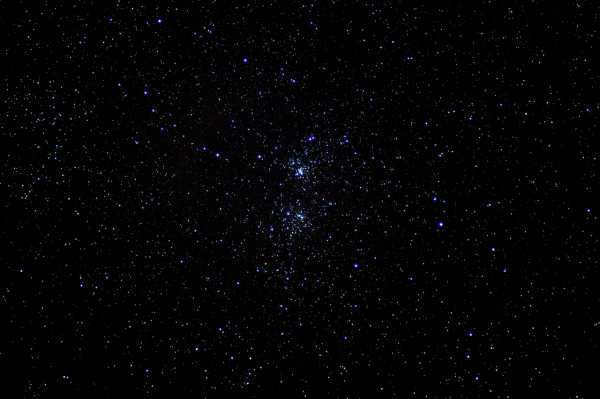
During the nighttime, when far away from the blinding glow of urban areas, the heavens reveal a captivating spectacle of numerous stars scattered across the constellations and the Milky Way. Attempting to manually count them appears to be an insurmountable task – the figures appear extraordinary, ranging from millions to billions. However, it immediately becomes apparent that this is precisely the duty of astronomers. So, what is the precise quantity of stars that truly populate the firmament? Today, we will endeavor to ascertain the exact figure.
What methods were used to count stars in ancient times?

The astronomer Hipparchus
In ancient Greece, the first astronomers attempted to determine the total number of stars in the sky. Hipparchus, an ancient Greek astronomer who lived over 2500 years ago, not only counted the stars, but also created a catalog of these celestial bodies and gave them names. He diligently observed the night sky every year, documenting the coordinates of newly discovered stars. These occurrences were labeled as star births. He dedicated several decades to this work, and in the end, he amassed data on over 1000 celestial objects. It is undeniable that his contributions have greatly impacted the field of modern astronomy.
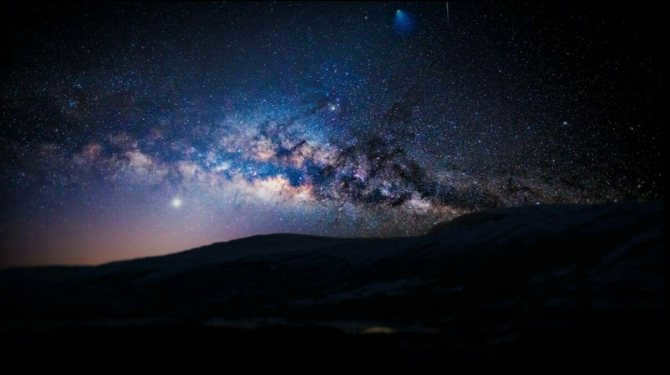
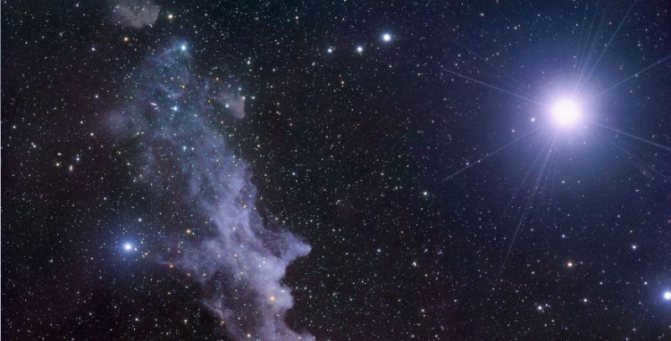

Star magnitudes
Ancient astronomers, such as Hipparchus, believed that all celestial bodies, including stars, were situated on the surface of a single sphere. This implied that the distance from each star to the observer was equal, and only their brightness varied. The stars were categorized based on their brightness, with the highest magnitude receiving the first category and the lowest magnitude receiving the sixth category. Hipparchus’ catalog included the following:
- 15 stars in the first category, which were the brightest;
- 45 stars in the second category;
- 208 stars in the third category;
- 474 stars in the fourth category;
- 217 stars in the fifth category;
- 49 stars in the sixth category, which included the dimmest stars.
It has been further determined with precision that the stars exhibit uneven luminosity and, moreover, are situated at varying distances from our planet. In addition to the visual technique for determining their brightness, the photographic method as well as the bolometric method are currently employed.

The classification of stars based on their spectra is known as spectral classification.
What is the number of stars visible through a telescope?
To observe a larger number of stars in the sky, it is necessary to have specialized equipment, such as a telescope. A high-quality telescope allows you to observe approximately 200,000 shimmering objects in the night sky. Isn’t it amazing?
It can be challenging to witness the full expanse of celestial bodies in the night sky. Observatories, equipped with advanced telescopes, are typically situated in remote, mountainous regions, far away from densely populated areas. The higher elevation of these observatories allows for a more rarified atmosphere and a wider field of view.


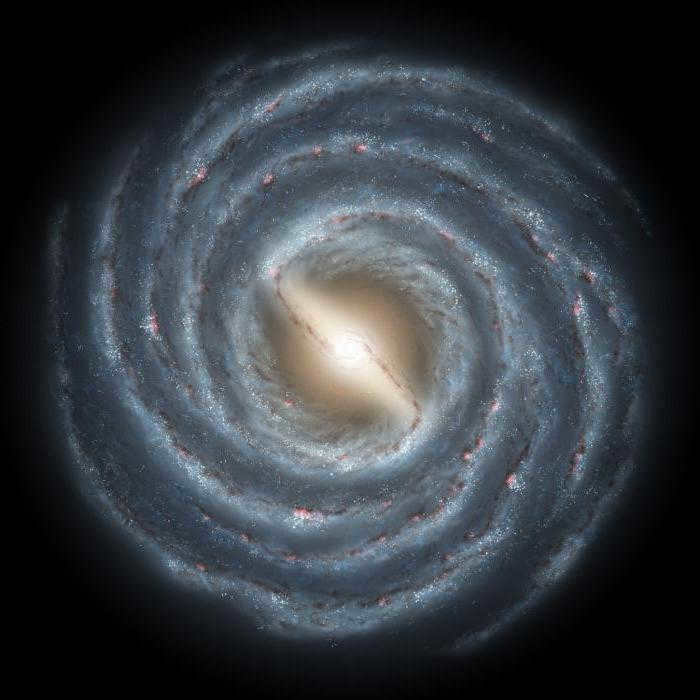
The most well-known celestial bodies
Regardless of the immense size and brightness of the colossal stars, it is not possible to gauge their dimensions and emitted radiance from the vantage point of planet Earth without the aid of binoculars. However, the cosmic entities that are visible to the naked eye in the night sky have garnered significant renown. Nevertheless, more frequently, the focus is on groups of luminous objects, rather than individual stars.
The Big Dog constellation
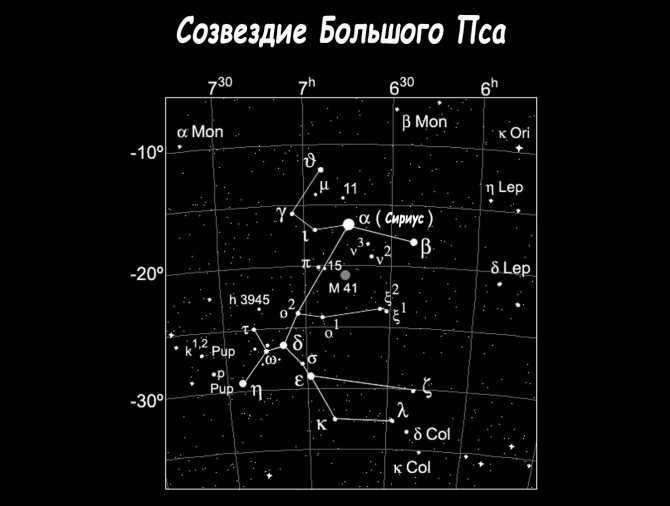
Sirius, located in the brilliant constellation, is widely renowned. This particular star stands out due to its close proximity to the solar system, making it visible from any part of the world. Consisting of two components, A and B, Sirius is twice the size of our Sun. Remarkably, this star can even be observed during daylight hours, further enhancing its prominence.
Throughout ancient times, Sirius was described as emitting a reddish glow. However, modern observation reveals a captivating bluish aura, which has yet to be fully explained by scientists.
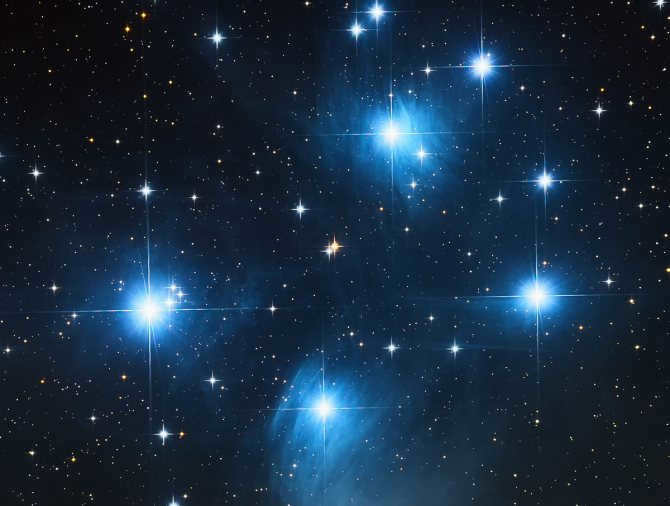
The zodiacal cluster is home to a magnificent supergiant star known as Aldebaran. This popular celestial body has been recognized since ancient times and has been given various names such as the “Eye of Taurus” and the “Eye of the Wolf”. It is worth mentioning that this celestial giant has also made appearances in feature films, further adding to its fame. One of the most remarkable features of Aldebaran is its stunning orange glow.
In 1972, a satellite was launched towards the star Aldebaran with the aim of studying it. However, after 31 years, communication with the satellite was lost, and its exact whereabouts are now unknown. Scientists predict that it will take approximately 2 million years for the satellite to reach its intended destination.
Hercules, the constellation
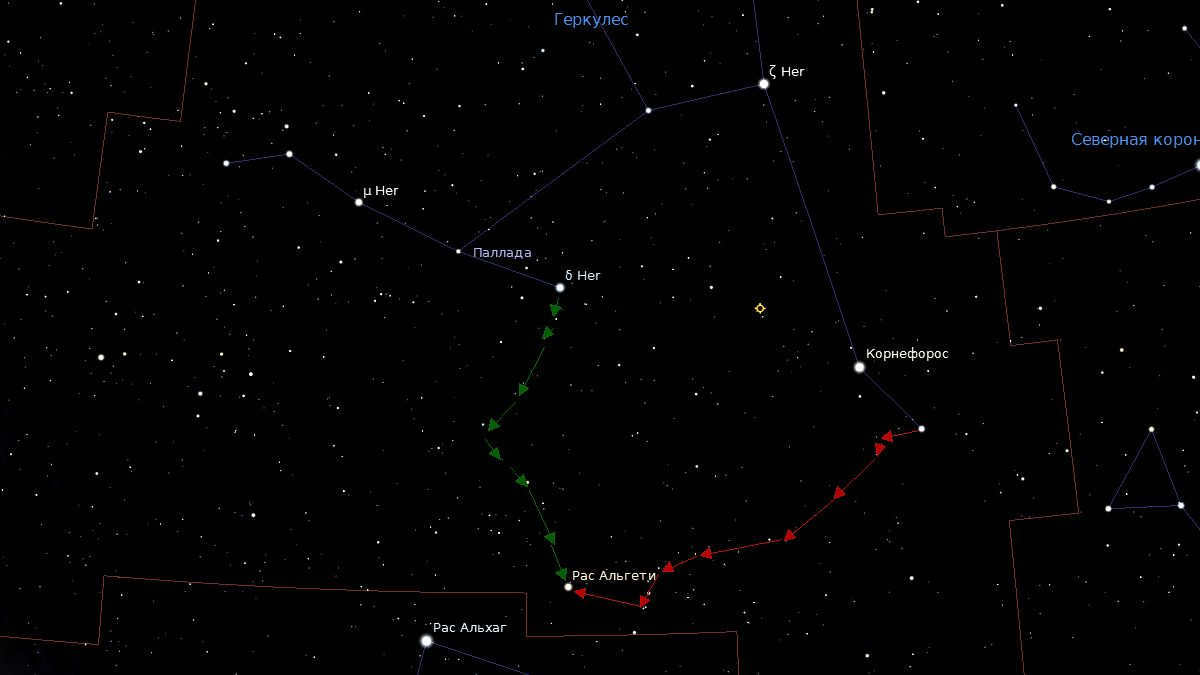
Hercules, the constellation that consists of 19 constellations, possesses a remarkable feature known as the Great Globular Cluster (M13). Remarkably, this phenomenon can be easily observed using just a pair of ordinary binoculars.
When viewed at low magnification, the Great Globular Cluster will appear as a celestial object with a “fuzzy, wandering” light. However, when observed through professional telescopes, it is possible to discern the individual components that make up the globular cluster.
What is the total number of stars in our solar system?
When gazing at the vast expanse of the night sky, many individuals have likely pondered the quantity of stars that exist within our Solar System. One might assume there are millions or even billions, but in reality, there is only a solitary star, and that is the Sun. It emerged more than 4.5 billion years ago as a result of the continuous accumulation of space gas clumps in a single location. Each clump was subjected to varying gravitational forces until the formation of a star. The internal energy of the star then became a counterbalance to these gravitational forces.
The quest for knowledge persists
The previously preferred optical method used by astronomers proved insufficient in detecting all the objects within the observed region of space.
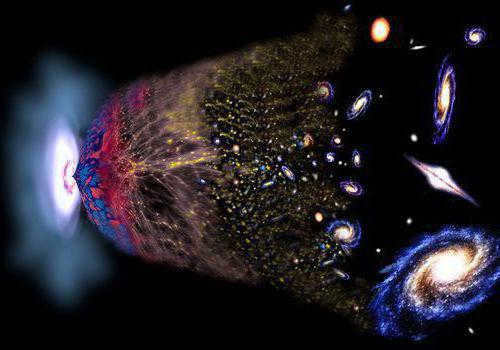
In order to gain a deeper understanding of the universe, scientists are carrying out additional research in the infrared and X-ray ranges. This important work is being conducted by scientists from around the globe and has resulted in the continual expansion of the catalog of celestial objects. The number of detected objects is steadily on the rise.
For instance, in 2014, the Ultra Deep Field telescope examined a fraction of the observable sky, specifically 1/13000000th, and discovered approximately ten thousand galaxies within this area. The abundance of information obtained from these findings requires meticulous processing and analysis in order to further our comprehension of the structure of the Universe.
Maybe over time we will come to the realization that our understanding of the number of stars in the Universe is incorrect. The expanse of space may be infinite or possess an alternative spatial structure. Moreover, it is plausible that we inhabit just one of numerous universes. Regardless of the actuality, humanity’s thirst for knowledge will eventually guide us to the solution.
Our galaxy is known as the Milky Way. It is home to our solar system and many others. The Milky Way is classified as a spiral galaxy with a bar in the middle. Its diameter is approximately 30,000 parsecs, which is equivalent to 100,000 light-years. In more familiar terms, that’s about 1 quintillion kilometers. The Milky Way is approximately 1,000 light-years thick.
Fascinating fact: Numerous stars prefer to exist in pairs. These are known as binary stars, with both stars orbiting a common center of gravity. It’s worth mentioning that there are also entire groups of stars in the universe that have 3-4 stars orbiting a single center of gravity. As for our Sun, it is a solitary star. However, imagine how captivating it would be to witness the sunrise alongside 2-3 celestial luminaries.
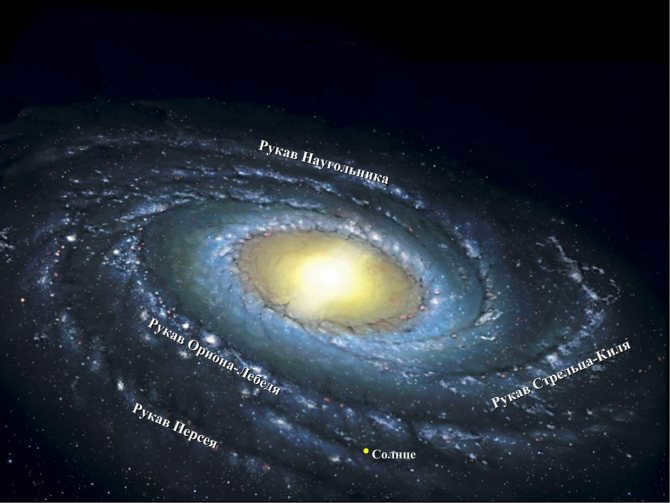
What is the total number of stars in our galaxy?
The most recent calculations suggest that our galaxy contains approximately 200 to 400 billion stars.. The majority of these stars are arranged in a manner that gives the appearance of a flat disk when viewed from a distance. Additionally, the Milky Way is also home to an estimated 25-100 billion brown dwarfs.

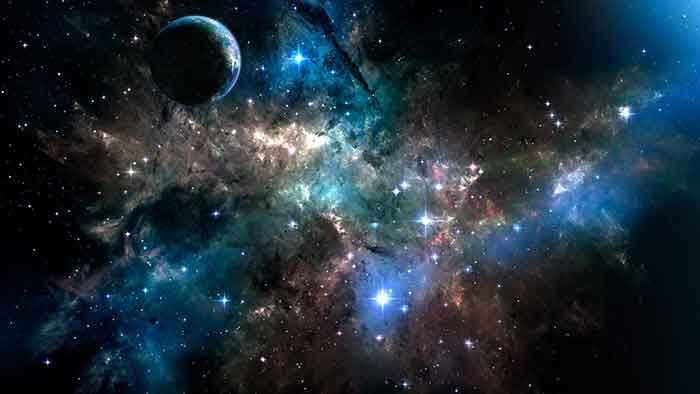


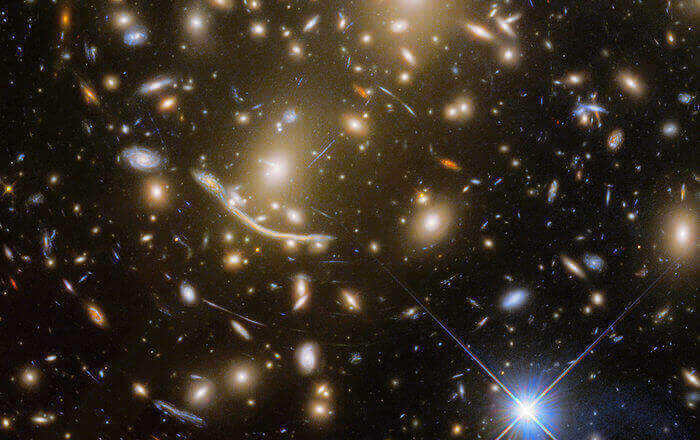
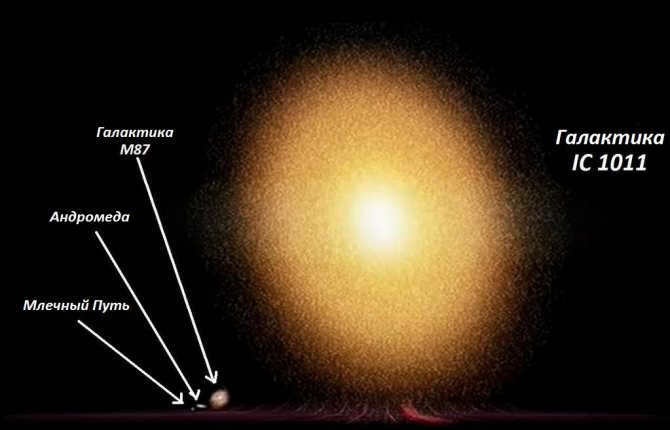

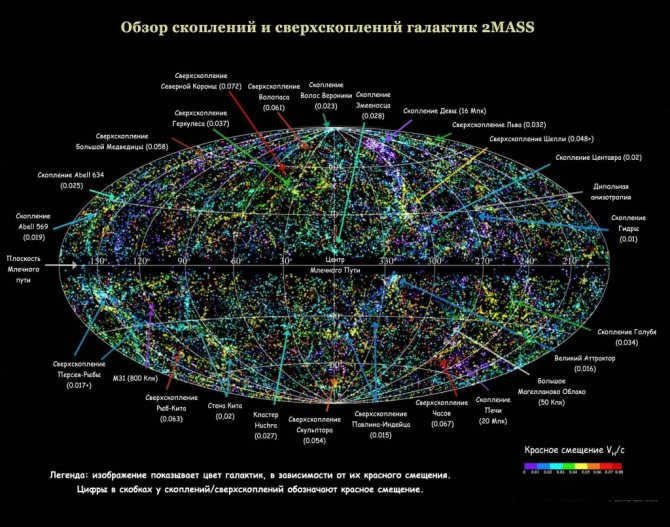
A century later, in the 18th century, the magnifying power of telescopes grew by a factor of ten. This advancement enabled scientists to observe previously unseen celestial objects in the universe. At that point, approximately one hundred thousand stars were within the realm of observation. The ability to see has always been a limiting factor in understanding the number of stars in the universe throughout different periods of human civilization.
Today, the resolving power of optical instruments has increased by thousands of times compared to Galileo Galilei’s original telescope, which had a magnification of thirty times.
The launch of the Hubble Space Telescope into orbit further increased this magnification by an additional 7-9 times.
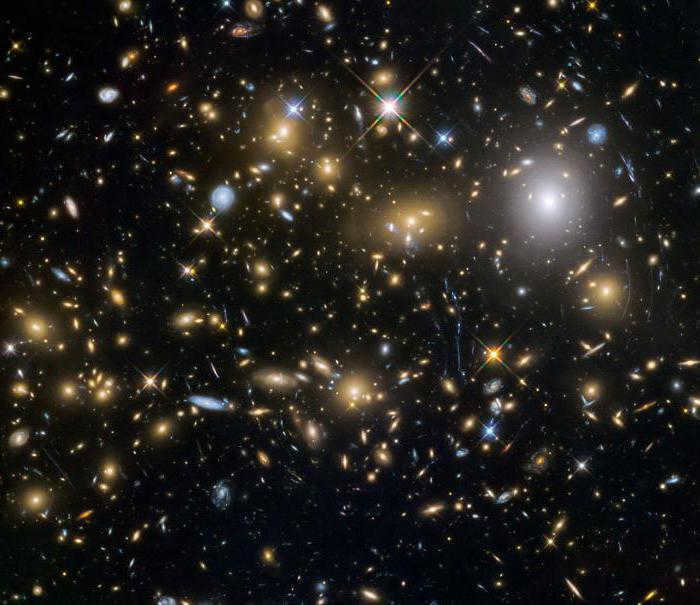
Astronomers worldwide have been presented with new discoveries about the vast expanse of the Universe. Scientists believe that in order to ascertain the total number of stars in the Universe, it is imperative to determine the number of galaxies present and understand the overall size of the Universe. This is due to the gravitational forces that bind stars within galaxies.
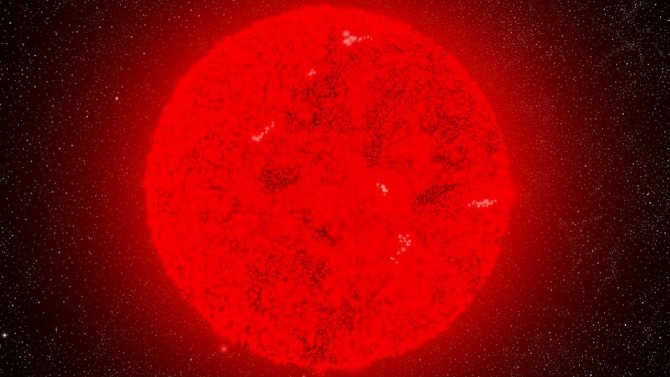
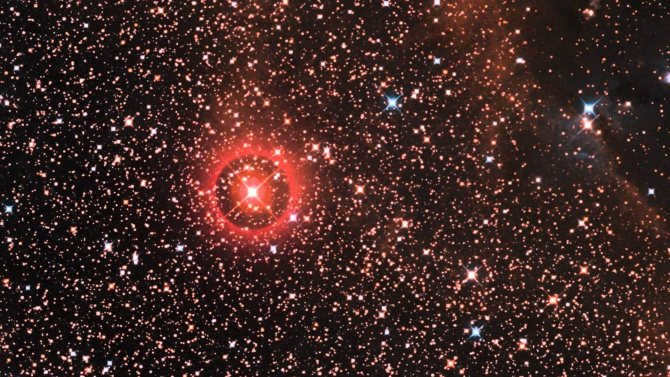
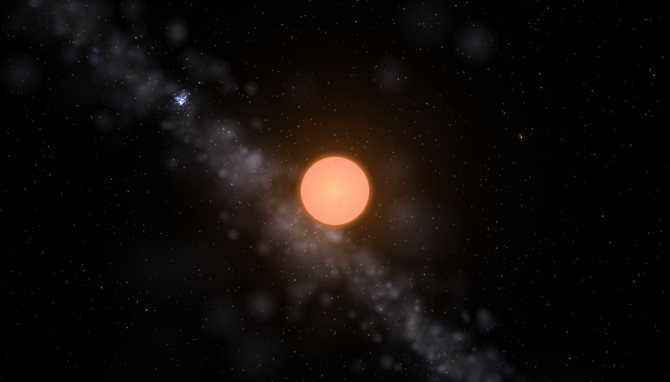
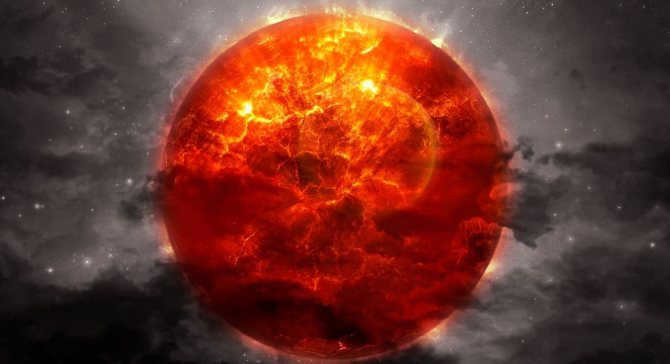
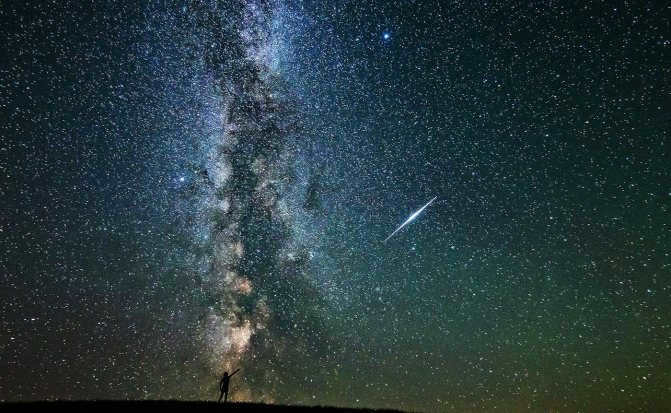
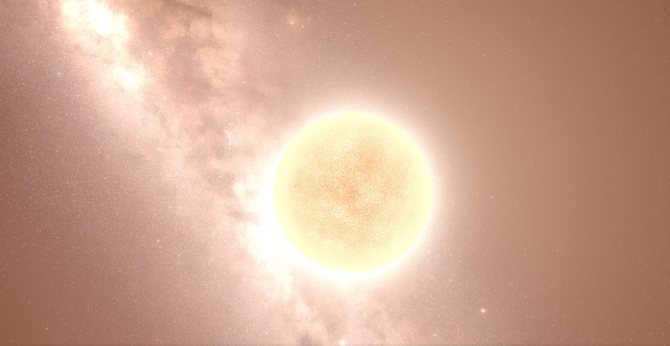
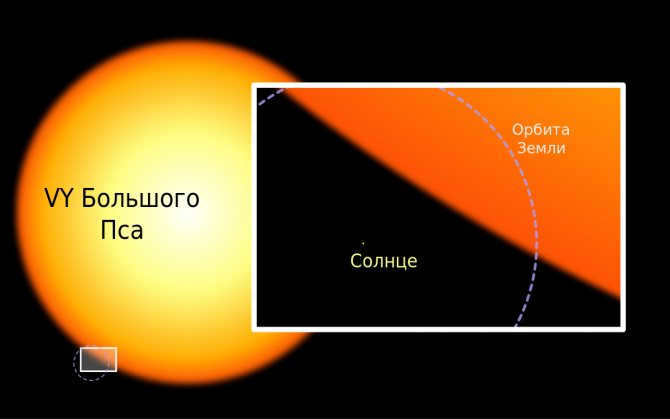
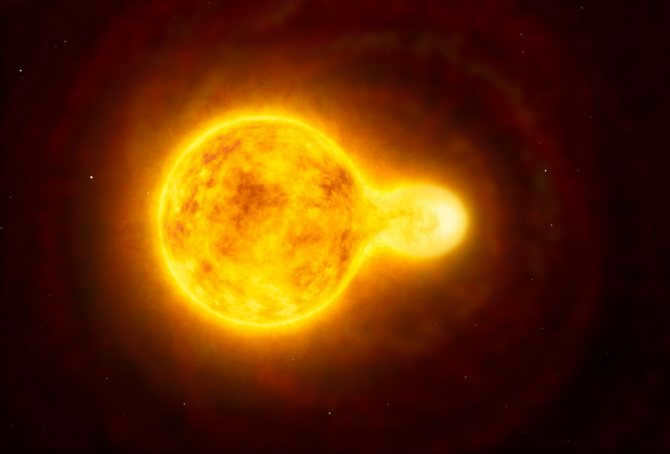
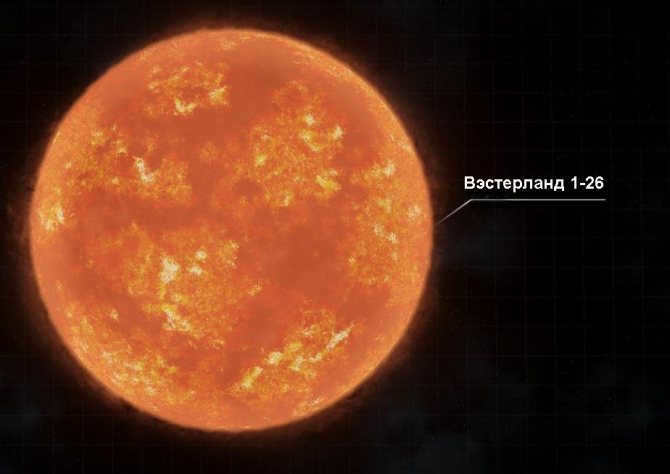
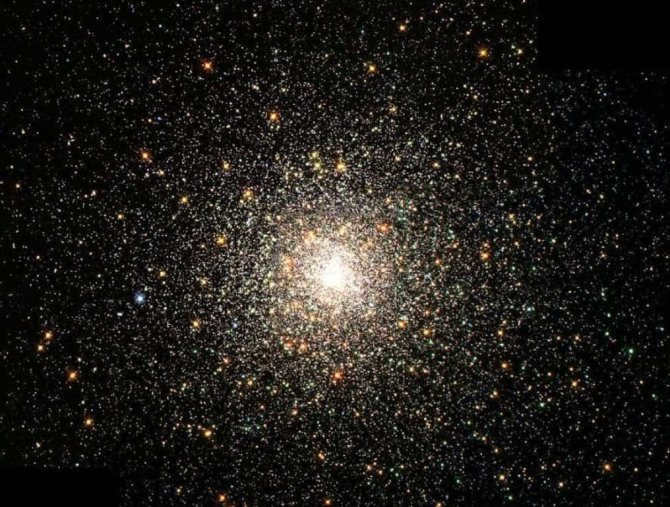

History of Stars
The understanding of stars and their characteristics didn’t come until the 20th century. However, even with these discoveries, there are still many unanswered questions. Scientists are perplexed as to why their mathematical calculations are constantly being contradicted by new findings.
In the 4th century BC, Aristotle attempted to prove that stars were stationary. This belief was based on the fact that sailors had always used them as navigational guides. There was also a popular belief in a special sphere where the gods resided, known as the sphere of stars.
From the 16th century onwards, progress in understanding stars accelerated. Giordano Bruno revealed to the world that stars are similar to the Sun in many ways. In 1596, a variable star was observed, and in 1650, a double star was discovered.
Their research was continued by Kant, Lomonosov, Belopolsky, and numerous other scholars. Over time, they delved deeper into the characteristics of stars, including their motion and quantity.
Perception through the human eye
Since ancient times, the ability of the human eye to perceive stars has remained unchanged. The number of stars visible to the naked eye without any additional tools has also remained constant. It is now understood that there are trillions of stars in the universe, although this estimate only accounts for those within the visible range for humans. However, most of these stars can only be observed with the aid of instruments.
Generally, only stars with a magnitude of approximately +7 are visible to the naked eye. The specific magnitude a person can perceive depends on their vision capabilities and the darkness of the sky. Under ideal conditions, objects with a magnitude of +8 can be seen, while under unfavorable conditions, only those with a magnitude of +6 or brighter are visible.
Consequently, an individual who refrains from utilizing electronic devices has the capacity to observe 6000 celestial bodies. However, it is important to acknowledge that the sky is divided into two hemispheres, limiting the maximum visibility to 3000 in each hemisphere. Furthermore, certain stars situated near the horizon are obstructed by the atmosphere, while others may be concealed by natural terrain features such as hills and mountains, as well as vegetation and urban landscapes. Consequently, the actual number of stars visible to a casual observer is reduced to approximately 2500. In order to circumvent these hindrances, observatories are constructed at higher elevations and away from urban areas.
However, if there is a moon at night or other sources of light, including a standard flashlight, the viewer can only see 200 out of the 2,500 stars.
How can I locate a planet using a telescope?
In order to provide you with information about new exoplanets on our Yandex.Zen channel, “Kepler” monitored the entire visible universe from Earth’s orbit daily until 2020 using the “transit method”. This method involves the telescope observing stars within its field of view to detect a small dark spot passing across the disk of a distant star. Each spot discovered indicated the potential discovery of a new exoplanet by Kepler.

Although Kepler has made significant progress, it is not infallible in its search for exoplanets. The task of locating a large planet in close proximity to its star is much simpler compared to finding a small planet situated at a relatively distant orbit from its star. Consequently, scientists speculate that the telescope may have overlooked numerous potential worlds.
To address this potential oversight, researchers have devised a novel approach to determine the frequency at which planets are discovered across a wide range of sizes and orbital distances. This innovative method involves simulating “universes” composed of stars and planets, and subsequently “observing” these simulated universes to ascertain the number of planets that would have been detected by Kepler in each of these virtual realms.





